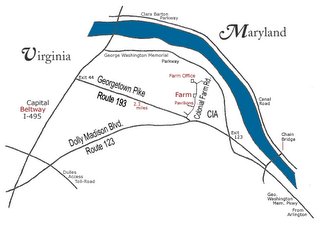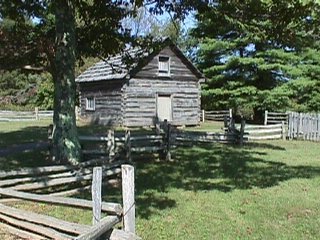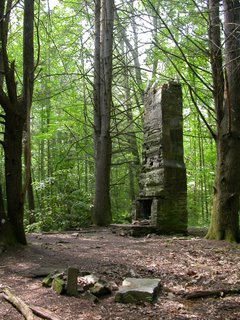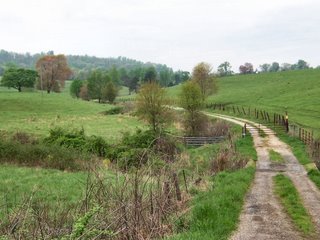 Image: lightning.gif Photo courtesy and (c) Charles Doswell
Image: lightning.gif Photo courtesy and (c) Charles DoswellYesterday morning, evening, and last night thunderstorms moved through the area where I live in the Blue Ridge Mountains; some of the storms last night were quite significant. These storms reminded me of the importance of a hiker or camper’s knowledge of weather and what to do in the event that you are caught in the outdoors during an electrical storm.
When hiking, always be on the lookout for the signs of an approaching thunderstorm. It’s wise to check the weather forecast before setting out on a hike. However, if you are on a long (several days) hike you may not have access to weather forecasts and, as we all know, you can’t always depend on a forecast being accurate. Even though thunderstorms are more prevalent in late afternoon than in the morning, you must always be alert to signs of approaching inclement weather.
Lighting can originate from 6 – 8 miles (10 - 13 km) away from its last derivation, so it is possible for lighting to strike on the edge of a storm; if you wait until you see lightning, it may already be too late to take action.
If you are caught in a thunderstorm in the outdoors there are a number of things you can do to help protect yourself, but remember, there is no completely safe way to survive outdoors in a lightning storm.
If you think a storm is approaching move out of open and exposed areas. Ridges, open fields, or nearby tall objects like solitary trees, communication antenna, or rock spires are a bad place to be. Ridges and open fields leave you exposed and as the tallest object around, solitary trees and rock spires serve as natural lightning rods. Stay away from lakes, rivers, beaches where you are in the open and exposed. You will not be safe underneath canopies, small picnic or rain shelters, outhouses, rock overhangs and shallow caves.

Photo right: Courtesy of
NOAA, Lightning causes around 100 deaths in the U.S. annually (more than hurricanes and tornadoes combined). In the picture right, the young woman and her friends were severely injured by lightning just a few seconds after this picture was taken. Notice that no rain was falling, clearly illustrating that lightning can strike up to several miles away from the thunderstorm.
If you are hiking as a group spread out at least 20 feet (6 m) apart; lighting can jump as far as twenty feet and if you stay close together a lightning strike can injure a group of people.
Look for an area that is not exposed, an area with trees of uniform height or an area with low brush and bushes. Never seek shelter directly under a tree. If you cannot find any shelter at all, for example if you are above the tree line, go as low as you possibly can away from any ridges.
If you do get caught in the open and lightning is nearby, the safest position to be in is crouched down on the balls of your feet. A good bet is to crouch on top of a rock (not the highest one in the area) that is somewhat elevated or otherwise detached from the rocks underneath it. Do not allow your hands (or other body parts) to touch the ground, and keep your feet as close to one another as possible. The reason why you should hunker down on the balls of your feet is that when lightning strikes an object, the electricity of the lightning’s discharge does not necessarily go straight down into the ground. Often the electricity will travel along the surface of the ground for a significant distance. This is known as a "side flash". Many people who are "struck" by lightning are not hit directly by the main lightning channel, but are affected by the side flash as it travels along the surface of the ground (this can be especially true if the ground is wet). By keeping the surface area of your body, relative to the ground, to a minimum (that is, keep your feet together and do not allow any other part of your body to contact the ground), you can reduce the threat of a side flash from affecting you.
Alternatively if the above is difficult, sit on top of your pack, if you have one, with your feet together on the ground; crouched down with your eyes closed and your hands over your ears. Sight and hearing injuries are very common among lightning strike victims and near strike injuries.
DO NOT lie flat on the ground, as this is not a safe position.
If you have metal gear like a metal hiking stick, lay it on the ground at least twenty feet (6m) away from you.
Stay away from sharp changes in terrain such as the edge of water, the edge of a forest, where rocks meet dirt, the top or bottom of a ravine etc; such areas are naturally more hazardous and lightning tends to follow down the slope.
If your hair stands on end, you feel a tingling sensation, or if the area around you appears electrified, lightning may be ready to strike. Keep your ears covered and your eyes closed and hold your breath; people have been seriously injured when they breathe in the superheated air that surrounds, and is expanding out, from a lightning bolt.
It’s best to wait at least 30 minutes after the lighting and thunder has stopped to move on and resume activity; be sure the storm has left the area.
If a member of your party gets hit by lightning start emergency treatment immediately. A person is not electrified after being hit by lighting and a full 80% of people that are hit by lightning recover. If a person has no pulse or heartbeat, start performing CPR. Treat electrical burns as you would any other, and as soon as possible, get the injured person professional help.
Technorati Tags: [Blue Ridge Mountains][Weather][thunderstorms][hiking][Camping][lightning]


























































